Wild carrot is another invasive species that is very common around here. I thought of it as Queen Ann's Lace but I'm not sure where I picked up that name. It's also known as bishop's lace, or birds nest. I never paid much attention to it, but after taking some photos of insects on it, I looked it up, and I was interested to see that the carrots we eat are domesticated subspecies. When I think of carrots I think of the leafy greens. Most of these wild ones don't have many leaves, but the few they have are a little similar. I don't recall seeing domestic carrots flowering in vegetable gardens, but maybe we pull them out before they get a chance?
Most of the flowers are white, but some have a light pink or purple color in the early stages. Some of the flowers around the edges are larger.
Zooming in on the underside, you can see the seeds developing at the base of the flowers.
Curiously, some of them have a single tiny red flower in the center. Apparently the purpose has been debated since Charles Darwin. It may serve to attract pollinators. This time of the year, these are one of the most abundant flowers and they're frequently visited by bees, wasps, and flies.
At first I thought the curled up versions were in the process of opening. But it's the opposite, they're going to seed. The flat flower heads gradually curl up and then fall off and become tumbleweeds to spread the spiky seeds. So far I haven't noticed any on the ground. Maybe that happens later in the fall.
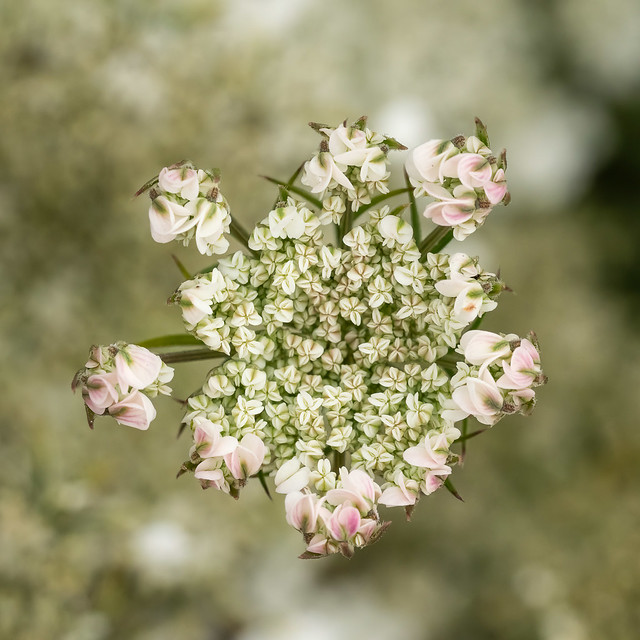
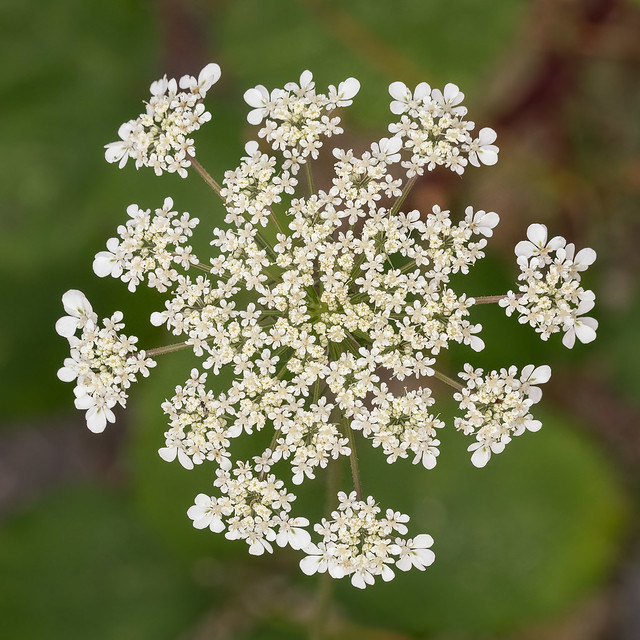
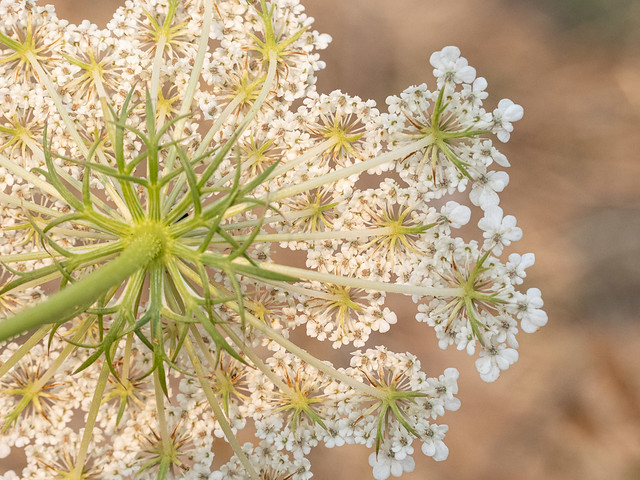
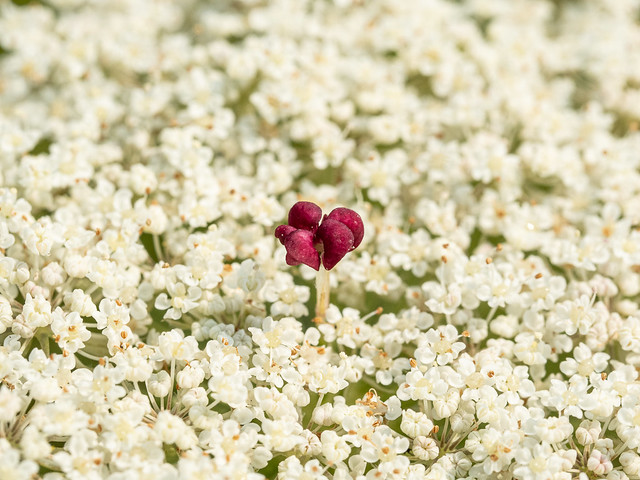
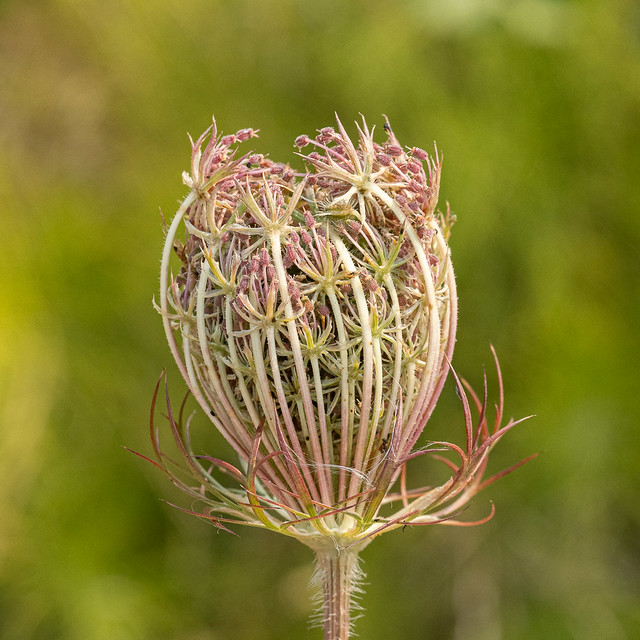
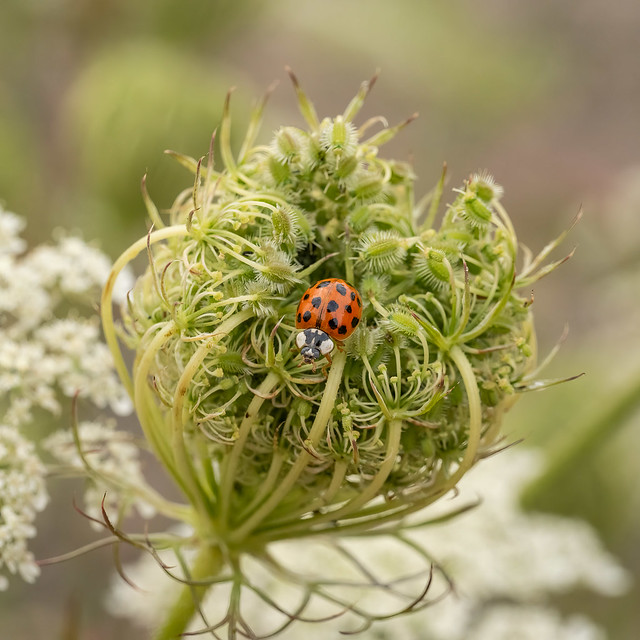
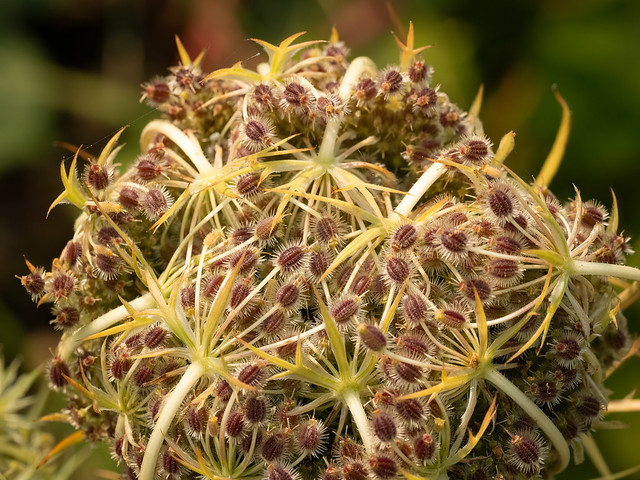
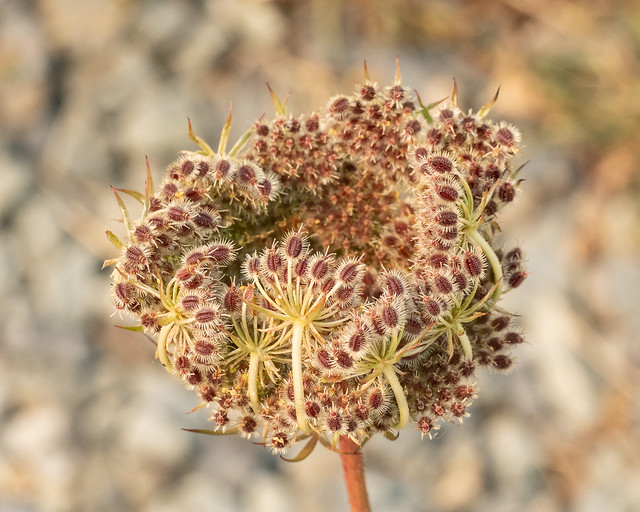
No comments:
Post a Comment